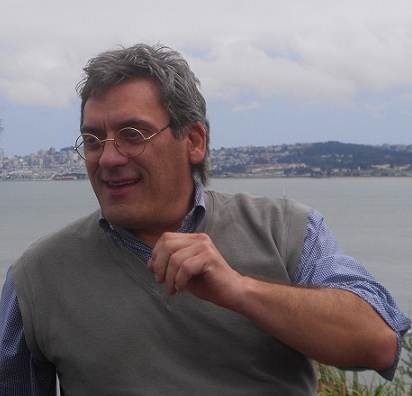My Story.
I was diagnosed with Acromegaly in October 2010. My condition, like many, if not most, of the stories I read and hear about, was missed for many years. In my case, doctors estimated around 30 years.
I met Dr. Lewis Blevins and Dr. Sandeep Kunwar for the first time at UCSF Center for Pituitary Disorders on a dreary, grey, drippy November San Francisco morning. “How fitting,” I thought; when you’re going to get bad news, it is usually a day like today, wet, windy, and miserable. But contrary to my Hollywood movie-like image, they were amazingly reassuring, particularly to my wife Carol, who was very, very worried. After all, it is not every day you are told you have a tumor in your head. Yet, for some strange reason, I was as calm as I’d ever been. Finally, knowing exactly what had been bothering me for so many years was like a 5000-pound rock lifted off my back. “Well”, Dr. Blevins said, “you’ve been growing for 30 years, and we’re gonna stop that”. “You are going to be feeling much better”, he said. My first thought, as I was listening to their explanations, the surgery, medical treatment steps, and what the future would hold was: “Boy, these guys ooze competence”. I was as reassured as anyone could ever be after that first meeting with these two doctors and could not wait to get this thing out of my head. I felt very lucky to be where I was. “These guys are the rock stars of the neuroendocrinology world”, I told Carol.
Three months earlier, I had gone to an orthopedic surgeon, Dr. John Dearborn, at the Institute for Joint Restoration in Fremont, California, who had recommended a hip replacement and, “by the way,” he said, “I think you have a condition called Acromegaly.” He told me what it was and what causes it. I must have looked at him in horror because immediately after, he felt compelled to tell me I was not going to die. He then explained how a colleague of his had Acromegaly and had had his golf-ball-size pituitary tumor removed.
I remember getting home after that appointment and googling “Acromegaly,” and THERE IT WAS!!!. “How is this possible,” I thought. The screen was filled with people that looked like me. “I have almost every symptom listed,” I screamed loud enough for my wife to hear me three rooms away. “You mean to tell me other people are running around with this?” “I have most of the physical characteristics!”, I added. “Wait a second, Andre the Giant has this?. Don’t any of these doctors I’ve seen for 30 years know about this?” “My grandmother could have diagnosed me. I could have diagnosed it”, I thought angrily. It was so evident to me!
I felt ignorant, then angry, then depressed. But I also realized then that I should have been more aware as a patient. Perhaps, if I had been more aware of potential pituitary conditions, I could have asked better questions and helped the doctors focus on a diagnosis earlier. I knew things would get better, but growing for 30 years had done irreversible damage to my bones and joints. That was the end of some of my favorite things: tennis, backpacking, hiking, and even standing and walking for long periods. I was going to have to adjust to all of that.
After transsphenoidal surgery, where 95% of the pituitary adenoma was removed, in one of my follow-up meetings with the UCSF team, I remember thinking I wanted to do something to help raise the awareness of acromegaly and pituitary disorders so more people could be diagnosed early and properly. “I can use my skills to do this”, I thought. It is obvious that many people are spending a lot of time trying to educate the world about pituitary disorders. Still, it is also evident that the word is not getting out fast and efficiently enough. So I told Dr. Blevins I wanted to help and get involved, and he immediately connected me with a bunch of people and organizations.
Dr. Blevins and I have developed a great friendship over the past years. I have great admiration for his skills as a doctor and as a friend. We’ve spent many moons chatting about how and what to do to help educate and inform.
Pituitary World News is our first effort to accomplish this. The doctor-patient collaborative approach would be beneficial to communicate medical and scientific knowledge and what it is like to live with a chronic condition, right from the horse’s mouth.
Pituitary World News is a communication and publishing platform for collaboration between industry experts, pharmaceutical company executives, medical personnel, physicians, scientists, patients, patient advocate groups, families, and everyone who has been touched by a pituitary disorder and wants to get involved.
We don’t have all the answers, and in many ways, we are learning as we go. But, we are certainly willing to give it our very, very best.
Will you help us?
Will you help us?
© 2014 – 2023, Pituitary World News. All rights reserved.
